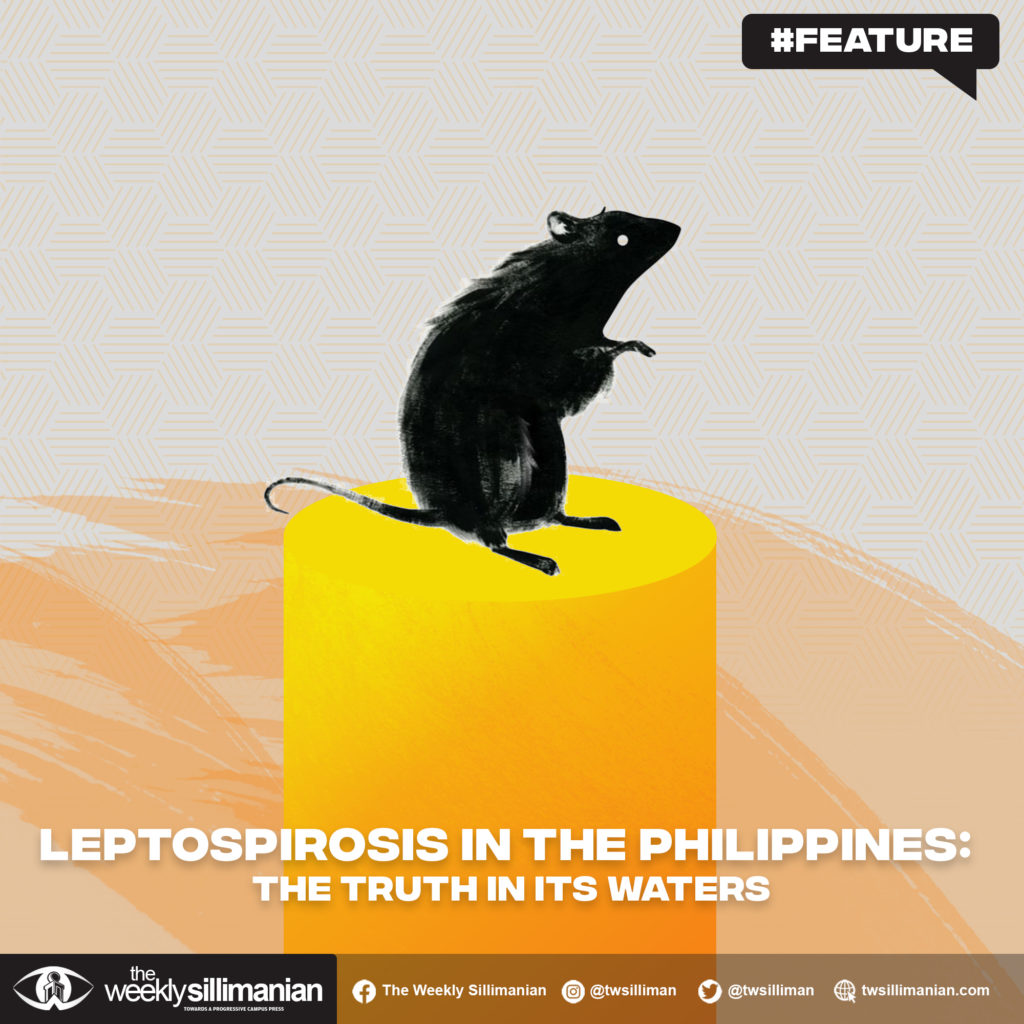by Ivan Anthony A. Adaro | October 20, 2021
When contaminated waters, floods, and animal fluids mix in one area, it’s when Leptospirosis, a bacterial disease caused by the bacteria genus Leptospira, develops at its full capacity. With a series of rains pouring over the last few weeks, cases of Leptospirosis have been increasing globally, especially in tropical countries where temperature, humidity, and rainfall levels are relatively high—and the Philippines is no exception to this.

Leptospirosis is endemic to the Philippines, with its seasonal peak during the rainy months of July to October. Recently, Department of Health (DOH) Undersecretary Maria Rosario Vergerie stated that 589 Leptospirosis cases were reported from January to June 2021, which is 13% higher compared to the 520 reported Leptospirosis cases in 2020 of the same period. Due to that matter, this issue has become daunting and alarming, and the reason for that is because Leptospirosis can be fatal to humans if not prevented or treated properly.
Its Effects on the Environment and People
Deficiencies in the sanitation of environmental sources are the biggest contributor to Leptospirosis transmissions, and sadly, that is the case here in the Philippines. Poor sewage systems, inadequate flood drains, and improper waste disposal are the main reasons why this disease thrives in the environment. Hence, Leptospirosis is endemic to the Philippines, especially during the rainy seasons. It can greatly affect our ecosystem by contaminating our waters, soils, and plants, and poisoning our lives and that of animals, leading them to have reproduction problems and gradually excreting the bacteria into the environment.
One of the most common beliefs in our country is that playing outdoors under the pouring rain or working on flooded pavements is harmless as long as you wash your body thoroughly with clean water after. However, regardless of cleansing, these habits can still increase the risk of catching the disease. Leptospira can thrive for up to several weeks or months in freshwater sources and can stick to food, soil, and mud.
In terms of how it goes inside the body, the disease spreads to humans through contact with bacteria present in water and soil contaminated with the urine of infected animals, such as rodents, pigs, and cattle. When a person gets Leptospirosis, the signs and symptoms frequently show after two to four days and occasionally occur in two phases. In the first phase, a person’s symptoms may manifest through fevers, chills, headaches, vomiting, and diarrhea. If treated properly, the patient may recover after a few days to three weeks or longer. Otherwise, it may reach the second phase, wherein the effects are more severe to the point where the patient may get kidney and liver failures, meningitis, inflammation in the brain, respiratory distress, and even death.
Things You Could Do to Avoid Catching It
The risk of getting Leptospirosis can be effectively reduced by simply not dwelling or wading in waters that could potentially be contaminated with animal urine. During the rainy season, the best thing you can do is to stay indoors and eliminate contact with potentially infected animals. If you need to go outdoors or work in occupational jobs heavily exposed to waters and animal fluids, always wear protective clothing and footwear to lessen the risk of getting in contact with bacteria. Additionally, wash your body thoroughly after handling your pets or when you’ve been in contact with rain and other potentially contaminated liquids. Should you or your pets catch Leptospirosis, immediately treat it with germ-killing antibiotics and contact a healthcare provider.
Leptospirosis is a life-threatening disease that greatly affects the environment. With the increase of Leptospirosis cases in the Philippines, drainage and discipline are highly needed to alleviate these issues. As individuals living in one community, our responsibility is to spread awareness and put our words into action. We can start by using our voice to encourage people to improve environmental sanitation by means of having modified drainage systems and proper solid waste management. The environment is the only home we have, and we should do our parts towards living and promoting a healthier life and environment.
Sources:
Centers for Disease Control and Prevent (2019). Leptospirosis. Retrieved October 17, 2021 from https://www.cdc.gov/leptospirosis/index.html
de Vera, A. (2021). DOH warns public vs leptospirosis; cases up by 13 percent in first half of 2021. Retrieved October 17, 2021 from https://mb.com.ph/2021/07/23/doh-warns-public-vs-leptospirosis-cases-up-by-13-percent-in-first-half-of-2021/
Reis, R. B., Ribeiro, G. S., Felzemburgh, R. D., Santana, F. S., Mohr, S., Melendez, A. X., Queiroz, A., Santos, A. C., Ravines, R. R., Tassinari, W. S., Carvalho, M. S., Reis, M. G., & Ko, A. I. (2008). Impact of environment and social gradient on Leptospira infection in urban slums. PLoS neglected tropical diseases, 2(4), e228. Retrieved October 19, 2021 from https://doi.org/10.1371/journal.pntd.0000228


